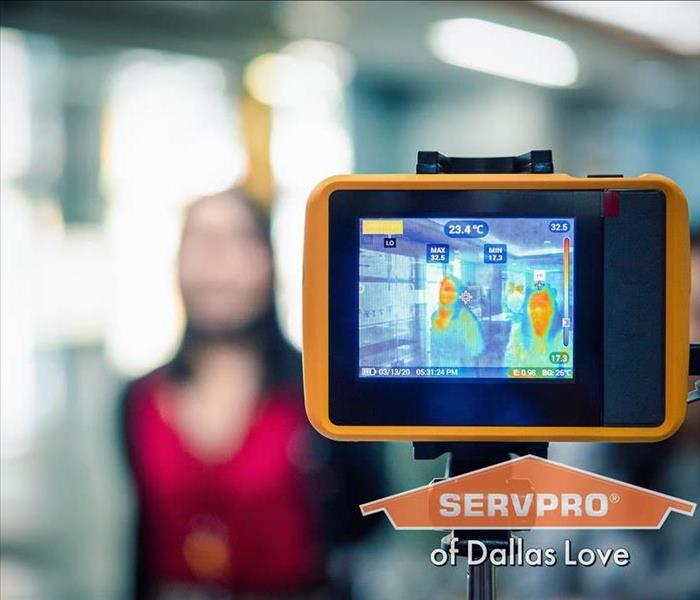What Does a Thermal Camera Do?
3/15/2022 (Permalink)
A thermal imaging camera is a specialized piece of equipment that restoration professionals use to detect heat. The thermal camera can create images of any form of detectable infrared radiation by capturing different heat levels to help determine the temperature of an object in it.
Thermal imagery is a great way to analyze your home’s heat loss and leaks. First, however, you need to know how to interpret the images. For example, infrared cameras detect thermal energy escaping due to missing insulation, cracks around windows and doors, and electrical hotspots.
However, thermal imaging can also detect particular cold areas and can help to identify water leaks and cold spots in homes.
Moisture seepage and water leaks are subtle and easy to miss in a building until it is too late. For example, small water drips from the ceiling or pools of water on floors mean a significant problem in the plumbing system or roof. Therefore, when interpreting a thermal image, it is essential to understand it doesn’t offer X-ray vision.
Is Blue Always “Wet” on Thermal Imaging?
There are many sources of moisture in buildings, including humidity (in all seasons), condensation, leaking pipes, rain and snow, and even human and animal breath. Usually, low humidity is fine, but leaks or a lot of condensation can cause serious problems. Unfortunately, a thermal imaging camera cannot “see” moisture in walls. Still, it can detect subtle temperature differences and patterns that indicate the presence of water.
Different colors are used to interpret an object’s temperature or amount of heat. The color range is red, orange, black, yellow, and purple. In this case, bright colors such as red, yellow, and orange indicate high temperatures, and purple, dark blue, and black indicate low temperatures.
Red, yellow, and orange: Indicates warm to high temperatures.
Dark blue, black, and purple: Represents cool to freezing temperatures.
Leaks or moisture almost always appear cooler and bluer than the surrounding material. Therefore, it becomes easier to make informed decisions when you understand how to read and interpret the thermal cameras.
Using thermal imaging cameras makes it easier to spot potential moisture problems. This can help prevent the need for destructive testing methods to check for leaks.
Humidity Patterns in Houses
Humidity in buildings often spreads in a recognizable pattern depending on the location of the water.
On walls: Downward triangular patterns are formed when water spreads downwards.
Ceilings: An shapeless, unstructured shape with regions of wet, damp, and wet matter that spread outward with varying temperatures.
Flooding: The overflowing water runs along the wall into the insulation and over the wall studs.
Hot water pipes: Leaks from hot water pipes appear as warm areas.
SERVPRO of Dallas Love is Here to Help
A thermal camera is easy to operate and helps to identify unseen moisture issues in homes damaged by a water event. At SERVPRO of Dallas Love, our team of experts uses thermal cameras for our Dallas water damage restoration services.
Call us today at (214) 272-7600 to find out how we can remove excess moisture and prevent mold growth after a flood.






 24/7 Emergency Service
24/7 Emergency Service
